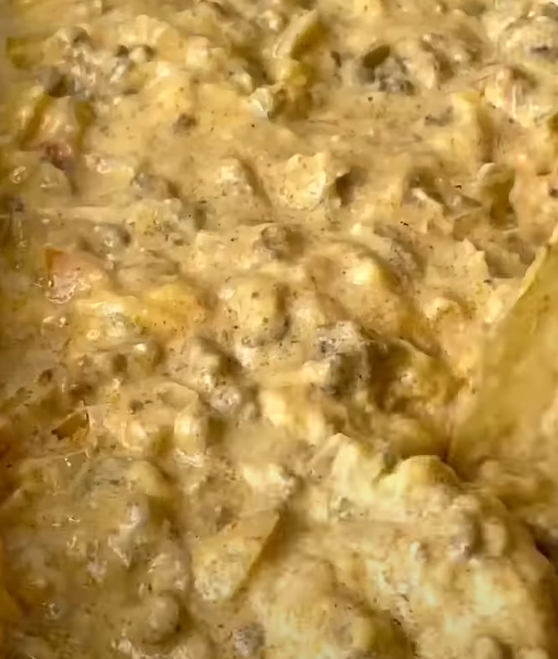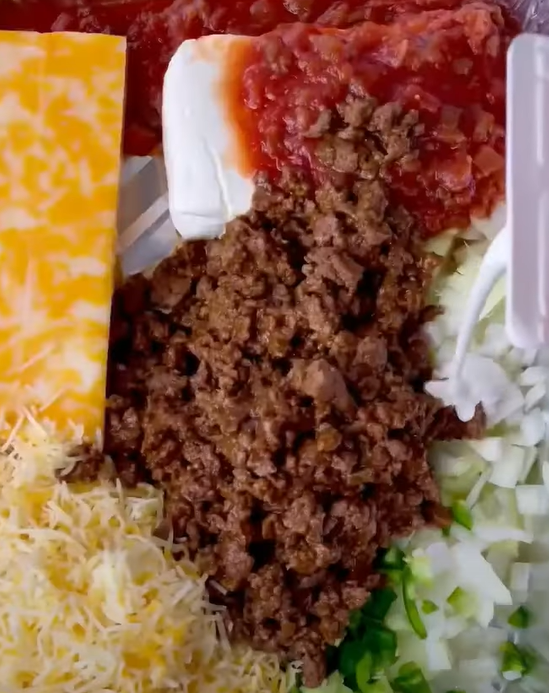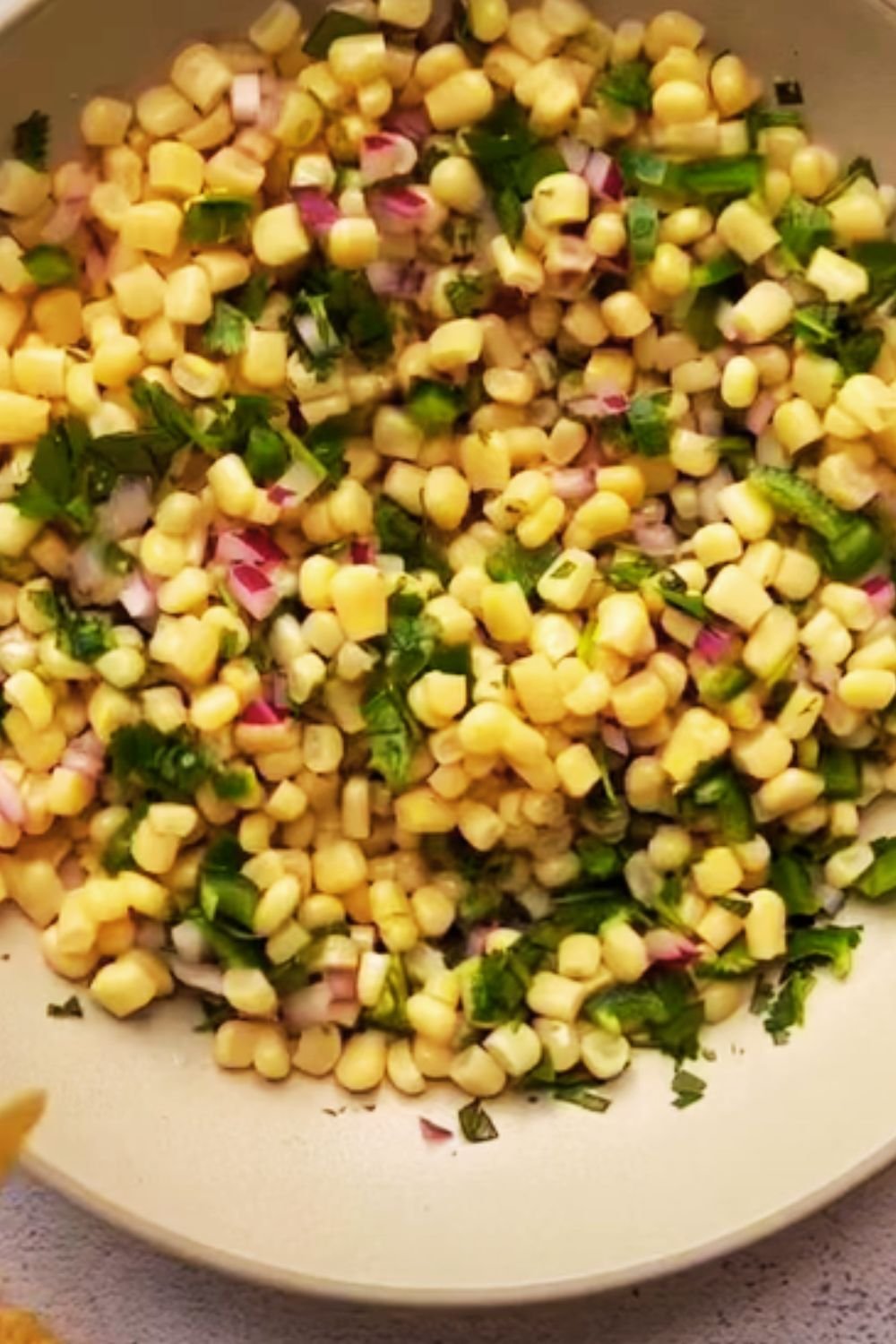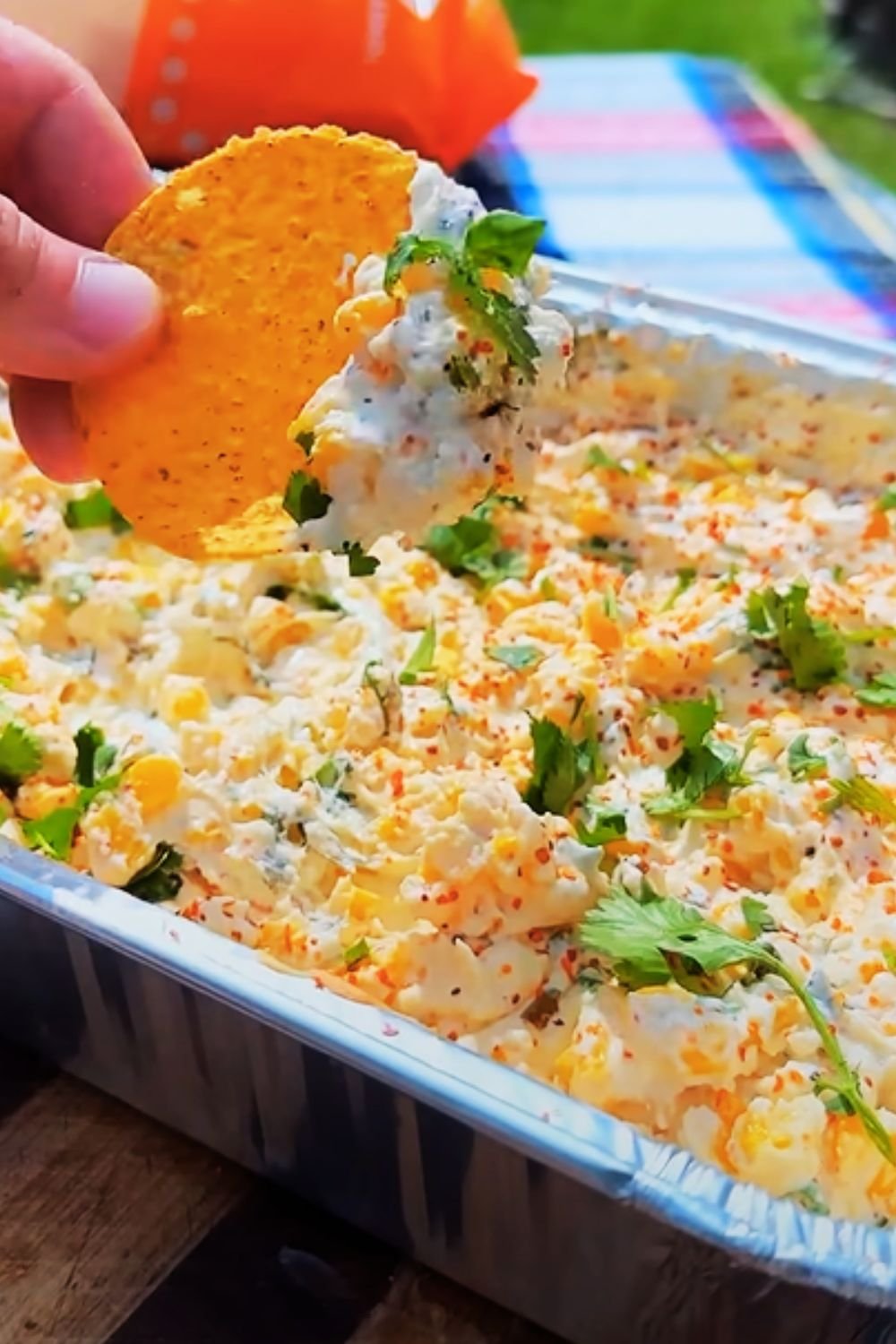There’s something magical about biting into a cookie and discovering a surprise hidden inside. My Big Blue Monster Stuffed Cookies have become the talk of every gathering I bring them to, and I’m thrilled to share this recipe with you. These vibrant blue treats aren’t just visually stunning – they’re packed with flavor and feature a delightful stuffed center that will have everyone asking for the secret.
I developed this recipe after countless experiments in my kitchen, trying to create something that would capture the whimsical spirit of childhood while delivering on taste. The result is a cookie that’s part dessert, part entertainment, and completely irresistible.
Understanding the Magic Behind Monster Cookies
Monster Cookies : Large, soft cookies typically loaded with mix-ins like chocolate chips, candies, or nuts, known for their generous size and varied textures.
Cookie Stuffing : The technique of placing a filling inside cookie dough before baking, creating a surprise center that’s revealed when the cookie is bitten or broken.
Blue Food Coloring : Food-grade coloring agents that create vibrant blue hues in baked goods without significantly altering taste or texture.
Cream Cheese Filling : A sweet, tangy mixture often used as a stuffing or frosting component that adds richness and moisture to baked goods.
The beauty of these cookies lies in their construction. I’ve perfected a method that ensures the filling stays centered and doesn’t leak during baking, while the cookie exterior develops that perfect chewy texture with slightly crispy edges.
Essential Ingredients Breakdown
Creating the perfect Big Blue Monster Stuffed Cookies requires understanding each ingredient’s role in the final product. I’ve learned through trial and error which components are absolutely crucial and which ones you can modify to suit your preferences.
The foundation of these cookies starts with high-quality butter. I always use unsalted butter at room temperature because it creams beautifully with the sugars and gives me better control over the salt content. The combination of brown and white sugar isn’t just for sweetness – the brown sugar adds moisture and that signature chewy texture, while white sugar helps with spreading and creates those lovely crispy edges.
For the blue coloring, I prefer gel food coloring over liquid varieties. Gel coloring provides more intense color without adding extra liquid to the dough, which could affect the cookie’s structure. You’ll need a surprising amount to achieve that vibrant monster blue, so don’t be shy with it.
The stuffing component is where creativity really shines. My go-to filling combines cream cheese, powdered sugar, and vanilla for a tangy-sweet center that complements the cookie’s richness. However, I’ve experimented with everything from chocolate ganache to peanut butter centers, and they all work beautifully with this technique.
Complete Recipe and Method
Cookie Dough Ingredients
| Ingredient | Amount | Purpose | Notes |
|---|---|---|---|
| Unsalted Butter | 1 cup (226g) | Structure & flavor | Room temperature |
| Brown Sugar | 3/4 cup (150g) | Moisture & chewiness | Packed measurement |
| White Sugar | 1/2 cup (100g) | Sweetness & spread | Granulated |
| Large Eggs | 2 | Binding & richness | Room temperature |
| Vanilla Extract | 2 tsp | Flavor enhancement | Pure extract preferred |
| All-Purpose Flour | 2 1/4 cups (281g) | Structure | Don’t overmix |
| Baking Soda | 1 tsp | Leavening | Fresh for best results |
| Salt | 1/2 tsp | Flavor balance | Fine sea salt |
| Blue Gel Food Coloring | 1-2 tsp | Color | Adjust to desired shade |
| Mini Chocolate Chips | 1 cup | Texture & flavor | Optional but recommended |
Cream Cheese Filling
| Ingredient | Amount | Purpose |
|---|---|---|
| Cream Cheese | 4 oz (113g) | Base & tanginess |
| Powdered Sugar | 1/2 cup | Sweetness & texture |
| Vanilla Extract | 1/2 tsp | Flavor |
| Mini Chocolate Chips | 2 tbsp | Extra surprise |
Step-by-Step Instructions
I always start by preparing my filling first because it needs time to chill and firm up. This makes the stuffing process much easier and prevents the filling from melting into the dough during assembly.
Begin by beating the softened cream cheese until it’s completely smooth and fluffy. This usually takes about three minutes with an electric mixer. Gradually add the powdered sugar, beating until well combined, then mix in the vanilla and mini chocolate chips. Transfer this mixture to a piping bag or simply use a spoon, then refrigerate for at least thirty minutes.
For the cookie dough, I cream the butter with both sugars until the mixture is light and fluffy – this typically takes four to five minutes of beating. The mixture should look pale and increased in volume. Add the eggs one at a time, beating well after each addition, then mix in the vanilla extract.
In a separate bowl, whisk together the flour, baking soda, and salt. Add this dry mixture to the creamed butter mixture, mixing just until combined. Overmixing at this stage can lead to tough cookies, so I always err on the side of under-mixing.
Now comes the fun part – adding the blue coloring. Start with one teaspoon and mix thoroughly, then assess the color. I usually end up using about one and a half teaspoons to achieve that vibrant monster blue, but this can vary depending on your coloring brand. Finally, fold in the mini chocolate chips if using them.

Assembly Technique for Perfect Stuffing
The key to successfully stuffed cookies lies in the assembly technique. I’ve developed a method that ensures even distribution of filling and prevents leakage during baking.
Divide your chilled cookie dough into portions of about three tablespoons each. Roll each portion into a ball, then flatten it into a disc about four inches across. The dough should be thin enough to wrap around the filling but thick enough that it won’t tear.
Place about one teaspoon of the chilled cream cheese filling in the center of each disc. Here’s my secret: I form the filling into small balls before placing them on the dough. This makes wrapping much easier and more consistent.
Carefully bring the edges of the dough up and around the filling, pinching and sealing the seams. Roll the assembled cookie gently between your palms to create a smooth ball, making sure all seams are sealed. The final cookies should be about the size of a golf ball.
Place the assembled cookies on parchment-lined baking sheets, leaving plenty of space between each one – about three inches apart. These cookies spread considerably during baking, and you don’t want them touching.
Baking Instructions and Timing
Preheat your oven to 350°F (175°C). I’ve found this temperature provides the perfect balance between cooking the filling through and achieving the right texture on the cookie exterior.
Bake the cookies for 12-15 minutes, rotating the baking sheets halfway through for even browning. The cookies are done when the edges are set and lightly golden, but the centers still look slightly underbaked. They’ll continue cooking on the hot pan after removal from the oven.
Let the cookies cool on the baking sheets for five minutes before transferring them to a wire rack. This cooling period allows the filling to set and prevents the cookies from falling apart during transfer.
Nutritional Information and Serving Details
| Nutritional Facts | Per Cookie (Makes 24) |
|---|---|
| Calories | 285 |
| Total Fat | 12g |
| Saturated Fat | 7g |
| Cholesterol | 45mg |
| Sodium | 180mg |
| Total Carbohydrates | 42g |
| Dietary Fiber | 1g |
| Sugars | 28g |
| Protein | 4g |
These cookies are substantial treats, perfect for satisfying serious sweet cravings. I typically serve them at room temperature, though they’re also delicious slightly warm. The cream cheese filling provides a lovely contrast to the sweet cookie exterior, making each bite interesting and flavorful.
Storage and Freshness Tips
Proper storage is crucial for maintaining the quality of these stuffed cookies. I store them in an airtight container at room temperature for up to five days. The cream cheese filling means they need to be kept properly sealed to prevent spoilage.
For longer storage, these cookies freeze beautifully. I wrap them individually in plastic wrap, then place them in a freezer-safe container. They’ll keep for up to three months frozen. To serve, simply thaw at room temperature for about thirty minutes.
If you’re making these for a special event, I recommend baking them the day before serving. They actually improve slightly overnight as the flavors meld together.
Troubleshooting Common Issues
Through my experience making these cookies, I’ve encountered and solved several common problems that bakers face with stuffed cookies.
Problem: Filling leaks during baking Solution: Ensure your filling is well-chilled and that you’ve sealed all seams properly. If the dough is too warm, chill the assembled cookies for fifteen minutes before baking.
Problem: Cookies spread too much Solution: This usually indicates the dough is too warm or contains too much liquid. Chill the dough if it seems soft, and make sure you’re measuring flour correctly.
Problem: Uneven blue color Solution: Gel food coloring can be stubborn to distribute. Mix it with a small amount of the vanilla extract before adding to the dough for more even distribution.
Problem: Cookies are too cake-like Solution: This often results from overmixing the flour or using too much flour. Measure flour by weight when possible, and mix just until combined.
Creative Variations and Adaptations
The beauty of this recipe lies in its versatility. I’ve created numerous variations that keep the same basic technique while changing flavors and fillings.
For a chocolate monster version, I replace half the flour with cocoa powder and use chocolate cream cheese filling. Pink monster cookies work beautifully with strawberry flavoring and freeze-dried strawberry pieces in the filling.
The filling options are endless. I’ve made versions with peanut butter filling, marshmallow fluff centers, and even caramel-filled variations. Each brings its own unique character to the cookie while maintaining that surprise element that makes these treats so special.
For those avoiding artificial colors, natural alternatives like spirulina powder can create interesting blue-green hues, though they won’t be as vibrant as gel coloring.
Serving Suggestions and Pairings
These cookies are substantial enough to serve as dessert on their own, but they also pair wonderfully with various beverages and accompaniments. I love serving them with cold milk, which helps balance the sweetness and richness.
For adult gatherings, they’re excellent with coffee or tea. The cream cheese filling complements both hot beverages beautifully. During summer months, I sometimes serve them alongside vanilla ice cream for an indulgent dessert.
They make excellent gifts when packaged in decorative boxes or bags. I often make batches for school events, office parties, and holiday gatherings where their visual appeal and unique flavor always generate excitement.
For children’s parties, these cookies are absolute hits. Their monster appearance and surprise centers make them conversation starters, and kids love the interactive element of discovering the filling.
Advanced Tips for Perfect Results
After making hundreds of these cookies, I’ve developed several advanced techniques that consistently produce superior results.
First, I always weigh my ingredients when possible. Baking is science, and precise measurements lead to consistent results. This is especially important for the flour, which can vary significantly in volume depending on how it’s measured.
Second, I pay close attention to butter temperature. It should be soft enough to leave a slight indentation when pressed but not so warm that it’s greasy. This usually means leaving it out for about an hour at room temperature.
For the most vibrant color, I sometimes add a tiny amount of purple food coloring along with the blue. This prevents the gray undertone that can sometimes occur with blue coloring alone.
I’ve also learned that the type of vanilla extract makes a difference. Pure vanilla extract provides better flavor than imitation, and the alcohol content helps with the cookie’s texture.
Seasonal Adaptations and Holiday Versions
These cookies adapt beautifully to different seasons and holidays with simple modifications. For Halloween, I use orange coloring and add pumpkin spice to the filling. Christmas versions feature red and green colors with peppermint-flavored fillings.
During spring, I create pastel versions in various colors, making them perfect for Easter celebrations or baby showers. The technique remains the same, but the visual impact changes dramatically with different color schemes.
For summer gatherings, I sometimes add freeze-dried fruit pieces to both the dough and filling, creating bright, fruity versions that feel lighter and more refreshing.
Questions and Answers
Q. Can I make the cookie dough ahead of time? Yes, the cookie dough can be made up to three days in advance and stored in the refrigerator. The filling can also be prepared ahead and kept chilled. Just remember to bring both components to the right working temperature before assembly.
Q. What if I don’t have gel food coloring? You can use liquid food coloring, but you’ll need more of it to achieve the same vibrant color, and it may slightly affect the dough’s consistency. Start with half a teaspoon and add more as needed.
Q. Can I freeze the assembled but unbaked cookies? Absolutely! Place the assembled cookies on a baking sheet and freeze until solid, then transfer to freezer bags. Bake directly from frozen, adding an extra minute or two to the baking time.
Q. Why do my cookies spread too much during baking? This usually happens when the dough is too warm or contains too much liquid. Make sure your butter isn’t overly soft, and chill the assembled cookies for fifteen minutes before baking if needed.
Q. Can I use different types of flour? All-purpose flour works best for this recipe. Cake flour will make the cookies too tender to hold the filling properly, while bread flour might make them too tough.
Q. How do I know when the cookies are properly done? The edges should be set and lightly golden, while the centers may still look slightly underbaked. They’ll continue cooking on the hot pan after removal from the oven.
Q. What’s the best way to achieve even blue coloring? Mix the gel coloring with the vanilla extract first, then add this mixture to your creamed butter and sugar. This helps distribute the color more evenly throughout the dough.
Q. Can I make smaller or larger versions of these cookies? Yes, but you’ll need to adjust the baking time accordingly. Smaller cookies will bake faster, while larger ones will need more time. Watch them carefully and adjust as needed.
Creating Big Blue Monster Stuffed Cookies has become one of my favorite baking adventures. There’s something deeply satisfying about watching people’s faces light up when they bite into these colorful treats and discover the creamy surprise inside. The combination of visual appeal, delicious flavor, and that element of surprise makes them perfect for any occasion where you want to create lasting memories through food.
The technique I’ve shared here will serve you well beyond this specific recipe. Once you master the art of stuffing cookies, you can apply these skills to countless other flavor combinations and creative ideas. Remember that baking is both art and science – follow the techniques carefully, but don’t be afraid to experiment with flavors and make these cookies your own.


